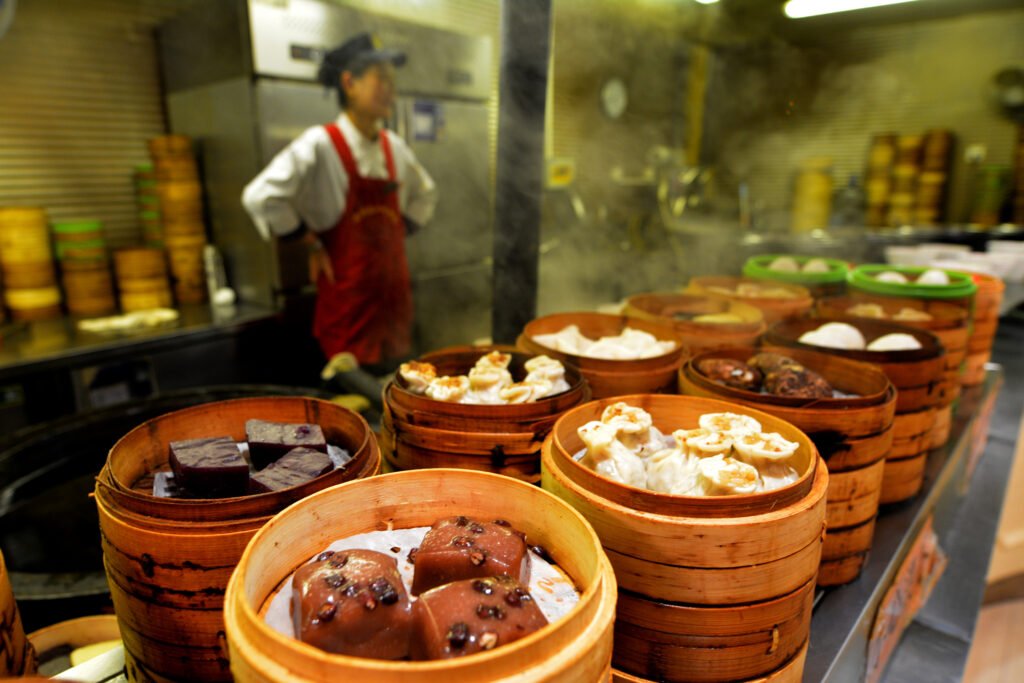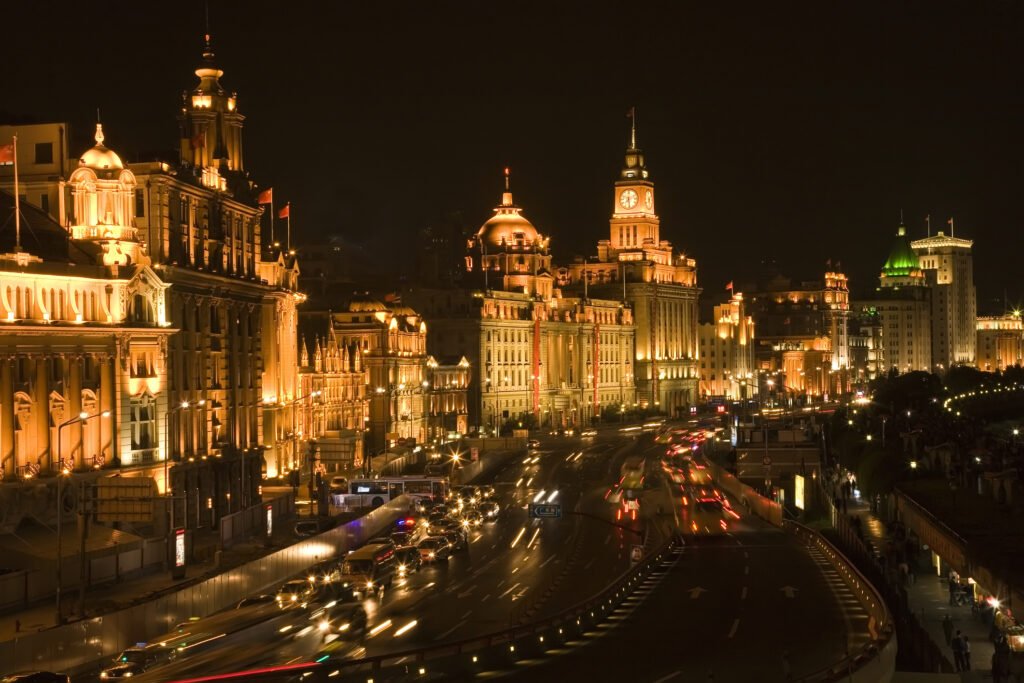
Shanghai, a dazzling metropolis straddling the Yangtze River Delta, has long been recognized as China’s most international city. This cosmopolitan energy permeates every facet of Shanghai life, and nowhere is it more apparent than in its vibrant and ever-evolving culinary scene. More than just a collection of restaurants, Shanghai is a testament to how tradition and innovation, local ingredients and global influences can harmonize to create an unforgettable gastronomic experience. Let’s embark on a journey to discover why Shanghai deserves its place among China’s top culinary destinations, delve into its rich history, and uncover the delicious adventures that await in this dynamic city.
Why Shanghai Ranks Among China’s Best Culinary Locations
- Culinary Crossroads of China: Shanghai draws culinary talent and influences from across China’s diverse regions, bringing together Sichuan spice, Cantonese dim sum, and Jiangsu delicacy under one roof. The result is a comprehensive sampling of China’s vast gastronomic landscape.
- A Legacy of International Flavors: As a major port city and former international concession, Shanghai has a long history of interacting with global cuisines. French, British, and Russian influences have blended with local traditions, resulting in unique and compelling fusion dishes.
- Pioneering Dining Scene: From inventive Michelin-starred restaurants to trendy cafes and bustling street food markets, Shanghai is always at the forefront of culinary innovation, experimenting with new techniques and ingredients while respecting traditional flavors.
- Seasonality & Freshness: With access to fertile agricultural lands and the bounty of the East China Sea, Shanghai prioritizes fresh, seasonal ingredients, ensuring peak flavors in every dish.
- Xiaolongbao Perfection: Shanghai is synonymous with xiaolongbao (soup dumplings), a delicate and artful creation that exemplifies the city’s culinary skill and attention to detail.
- Street Food Abundance: The vibrant street food scene offers a taste of authentic Shanghai life, with affordable and delicious snacks that reflect the city’s rich cultural heritage.
- Diverse Influences: Blending many different influences, Shanghai continues to influence trends in global culinary traditions.
Embark on a Culinary Adventure in Shanghai: A Guide for Food Lovers
To truly experience the heart of Shanghai’s food scene, you need to immerse yourself in its diverse neighborhoods, sample its iconic dishes, and explore its hidden culinary gems. Here’s a roadmap for an unforgettable culinary journey:
- Xiaolongbao Pilgrimage: Embark on a quest to find the perfect xiaolongbao, sampling these delicate soup dumplings at famous establishments like Din Tai Fung or exploring lesser-known local favorites.
- Street Food Safari: Wander through the historic lanes of the French Concession or the vibrant streets of the Old City, sampling local snacks like shengjian bao (pan-fried pork buns), cong you ban mian (scallion oil noodles), and guotie (potstickers).
- Fine Dining Experience: Treat yourself to a memorable meal at one of Shanghai’s acclaimed Michelin-starred restaurants, such as Ultraviolet by Paul Pairet or Taian Table, for a truly innovative and exquisite dining experience.
- Chinese Cooking Workshop: Learn the secrets of Shanghainese cuisine by taking a hands-on cooking class. Master the art of making xiaolongbao, red-braised pork belly, or other local favorites.
- Bund High Tea Indulgence: Experience a luxurious afternoon tea at one of the historic hotels along the Bund, enjoying pastries, sandwiches, and teas with stunning views of the city skyline.
- Explore Trendy Fusion Restaurants: See why food from Shanghai is world renown by visiting local fusion restaurants that use a variety of international influences to create unique and inspired dishes.
- Yu Garden Street Food Exploration: Enjoy traditional teas, sweets, and other food options at Old Town Bazaar of Yu Garden

Taste of History: Tracing Shanghai’s Culinary Evolution Through Tim
Shanghai’s culinary history is a fascinating reflection of its transformation from a small fishing village to a global metropolis. The city’s food culture has been shaped by its geographical location, its role as a major port city, and its unique blend of Chinese and foreign influences.
- Early Beginnings: Before the 19th century, Shanghai was primarily a fishing and agricultural area. The local diet consisted mainly of seafood, rice, and locally grown vegetables.
- The Rise of Shanghai: Following the Treaty of Nanjing in 1842, Shanghai became a major port and international settlement. This influx of foreigners brought new ingredients, cooking techniques, and dining customs to the city.
- Fusion Cuisine Emerges: As Shanghai’s population diversified, a unique blend of Chinese and Western flavors began to develop. Restaurants catering to both foreign and Chinese tastes emerged, creating innovative dishes that combined the best of both worlds.
- Post-Revolution Changes: After the Communist revolution in 1949, Shanghai’s culinary scene underwent significant changes. Many private restaurants were nationalized, and the focus shifted to providing affordable and accessible food for the masses.
- Economic Reform and Culinary Renaissance: Since the 1980s, Shanghai has experienced a remarkable economic boom and a culinary renaissance. The city has embraced innovation while maintaining a deep respect for traditional flavors and techniques, solidifying its status as a top destination for food lovers from around the world.
10 Iconic Recipes That Define Shanghai’s Culinary Landscape

- Xiaolongbao (小笼包): Delicate soup dumplings filled with seasoned pork and a savory broth, steamed to perfection and enjoyed with ginger and black vinegar.
- Shengjian Bao (生煎包): Pan-fried pork buns with a crispy bottom and a juicy filling, often sprinkled with sesame seeds and chopped scallions.
- Hongshao Rou (红烧肉): Red-braised pork belly, slow-cooked in a sweet and savory sauce until meltingly tender.
- Cong You Ban Mian (葱油拌面): Scallion oil noodles, a simple yet flavorful dish featuring noodles tossed in scallion-infused oil, soy sauce, and a touch of sugar.
- Pai Gu Nian Gao (排骨年糕): Fried pork chop with glutinous rice cakes, topped with a special sweet and savory sauce.
- Shanghai Fried Noodles (上海炒面): Noodles stir-fried with shredded pork, cabbage, and dark soy sauce, creating a savory and satisfying dish.
- Lion’s Head Meatballs (狮子头): Large, juicy pork meatballs braised in a flavorful broth, often served with napa cabbage and other vegetables.
- Smoked Fish (熏鱼): Marinated and smoked fish, offering a smoky and slightly sweet flavor. This is often made with carp in Shanghai.
- Vegetarian goose (素鹅): While it does not contain any goose, this is a Buddhist dish that consists of tofu skin.
- Glutinous Rice Ball in Fermented Rice Wine (醪糟汤圆): Soft rice balls simmered in a fragrant soup made from glutinous rice wine, offering a sweet and slightly tangy flavor.
A City That Consistently Innovates
Shanghai’s culinary scene is a testament to the city’s rich history, innovative spirit, and unwavering dedication to quality. From the bustling street food markets to the refined dining rooms of Michelin-starred restaurants, Shanghai offers a gastronomic journey that tantalizes the senses and leaves a lasting impression.
As you explore this dynamic metropolis, you’ll discover that in Shanghai, food is more than just sustenance – it’s a way of life, a celebration of cultural exchange, and a gateway to understanding the ever-evolving spirit of modern China. Whether you’re savoring a perfectly prepared xiaolongbao, indulging in creative fusion cuisine, or exploring the hidden culinary gems of the city’s diverse neighborhoods, Shanghai promises an unforgettable culinary adventure. The city has also become home to food that is hard to find anywhere else, making it even more unique.
The city’s ability to honor its culinary traditions while embracing innovation ensures that Shanghai will continue to be a top destination for food enthusiasts for years to come. With its unique blend of Eastern and Western influences, combined with an unparalleled range of dining options, Shanghai offers a feast for all the senses, making it a must-visit destination for anyone seeking to experience the true depth and diversity of Chinese cuisine. As you plan your culinary journey through Shanghai, consider these tips:
- Learn some basic Chinese phrases: While many restaurants in tourist areas have English menus, knowing a few basic Mandarin phrases will greatly enhance your experience, especially when exploring local street food stalls.
- Be adventurous and try new things: Don’t be afraid to step outside your comfort zone and try dishes you’ve never heard of before. Some of Shanghai’s most delicious culinary treasures are found in unexpected places.
- Explore different neighborhoods: Each of Shanghai’s districts has its own unique character and culinary offerings. Take the time to explore different areas of the city to discover hidden gems and local favorites.
- Respect local customs: Be mindful of local dining etiquette, such as using chopsticks properly and avoiding sticking them upright in a bowl of rice, which is considered bad luck.
- Embrace the street food scene: Shanghai’s street food is not only delicious but also an integral part of the city’s culture. Be sure to sample a variety of snacks from local vendors, but always choose vendors with clean-looking stalls and fresh ingredients.
Shanghai is truly a food lover’s paradise, a city where culinary traditions are celebrated, innovative ideas are embraced, and delicious discoveries await around every corner.


